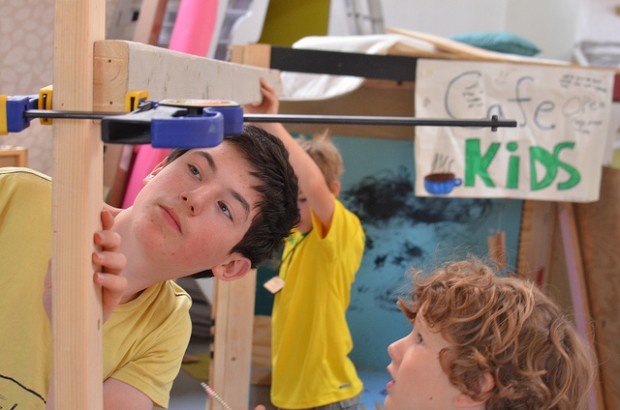
By Suzie Boss
The following suggestions for turning K-12 classrooms into innovation spaces come from Bringing Innovation to School: Empowering Students to Thrive in a Changing World, published in July by Solution Tree.
How can we prepare today’s students to become tomorrow’s innovators? It’s an urgent challenge, repeated by President Obama, corporate CEOs, and global education experts like Yong Zhao and Tony Wagner. Virtually every discussion of 21st-century learning puts innovation and its close cousin, creativity, atop the list of skills students must have for the future.
If we’re serious about preparing students to become innovators, educators have some hard work ahead. Getting students ready to tackle tomorrow’s challenges means helping them develop a new set of skills and fresh ways of thinking that they won’t acquire through textbook-driven instruction. Students need opportunities to practice these skills on right-sized projects, with supports in place to scaffold learning. They need to persist and learn from setbacks. That’s how they’ll develop the confidence to tackle difficult problems.
How do we fill the gap between saying we must encourage innovation and teaching students how to actually generate and execute original ideas? The answers are emerging from classrooms across the country where pioneering teachers are making innovation a priority. Their strategies vary widely, from tinkering workshops and design studios to digital gaming and global challenges. By emphasizing problem solving and creativity in the core curriculum, these advance scouts are demonstrating that innovation is both powerful and teachable.
Across disparate fields, from engineering and technology to the social and environmental sectors, innovators use a common problem-solving process. They frame problems carefully, looking at issues from all sides to find opportunity gaps. They may generate many possible solutions before focusing their efforts. They refine solutions through iterative cycles, learning from failure along with success. When they hit on worthy ideas, innovators network with others and share results widely.
In the classroom, this same process corresponds neatly with the stages of project-based learning. In PBL, students investigate intriguing questions that lead them to learn important academic content. They apply their learning to create something new, demonstrate their understanding, or teach others about the issue they have explored. By emphasizing key thinking skills throughout the PBL process, teachers can guide students to operate the same way that innovators do in all kinds of settings.

